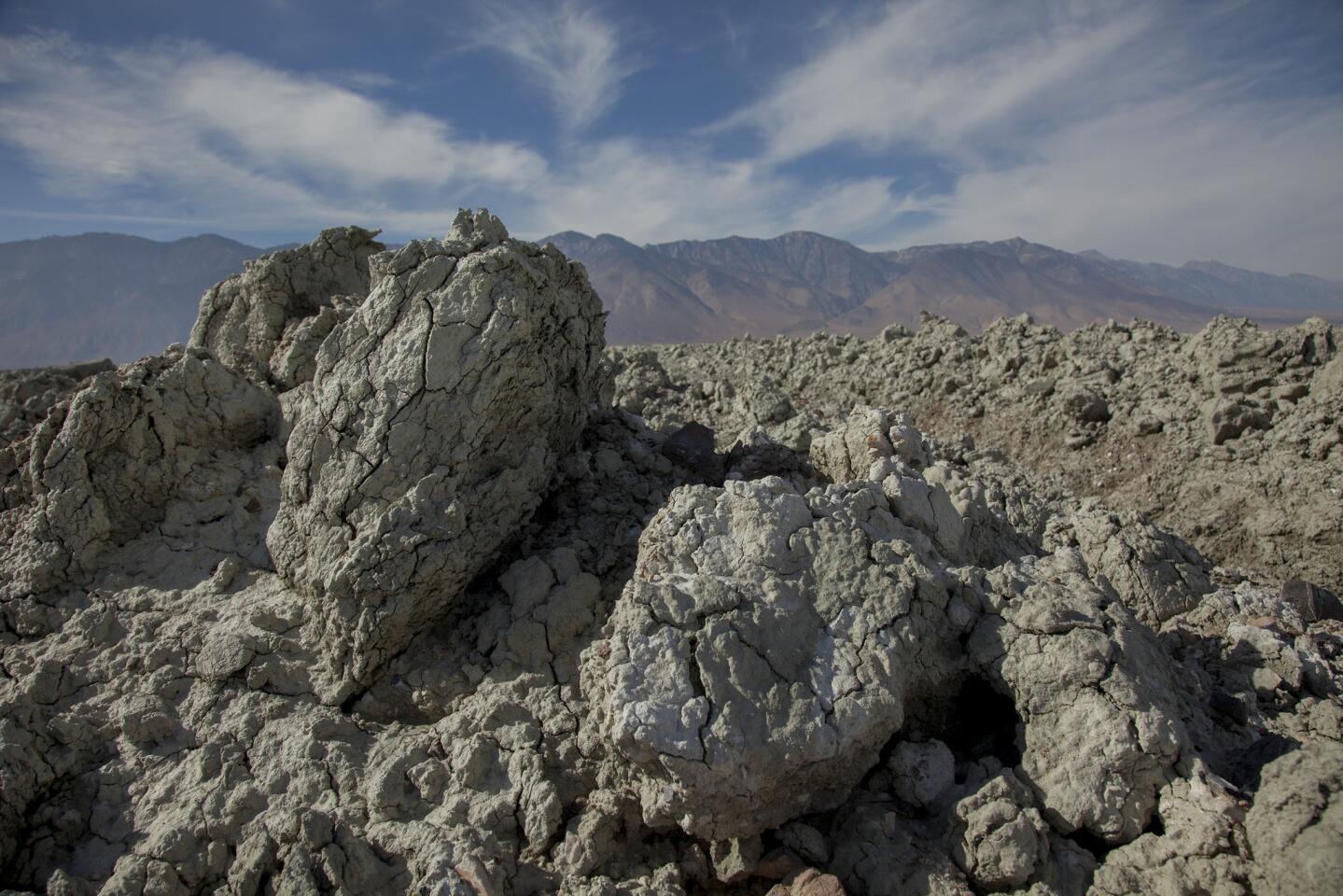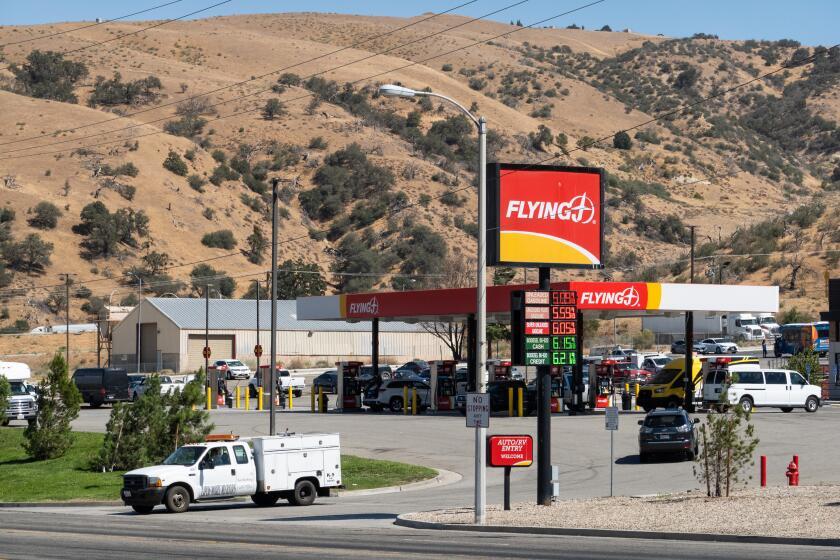Los Angeles and state air quality officers have reached an agreement with the Great Basin Unified Air Pollution Control District designed to end unhealthful dust storms on dry Owens Lake and produce an immediate supply of water for Los Angeles.
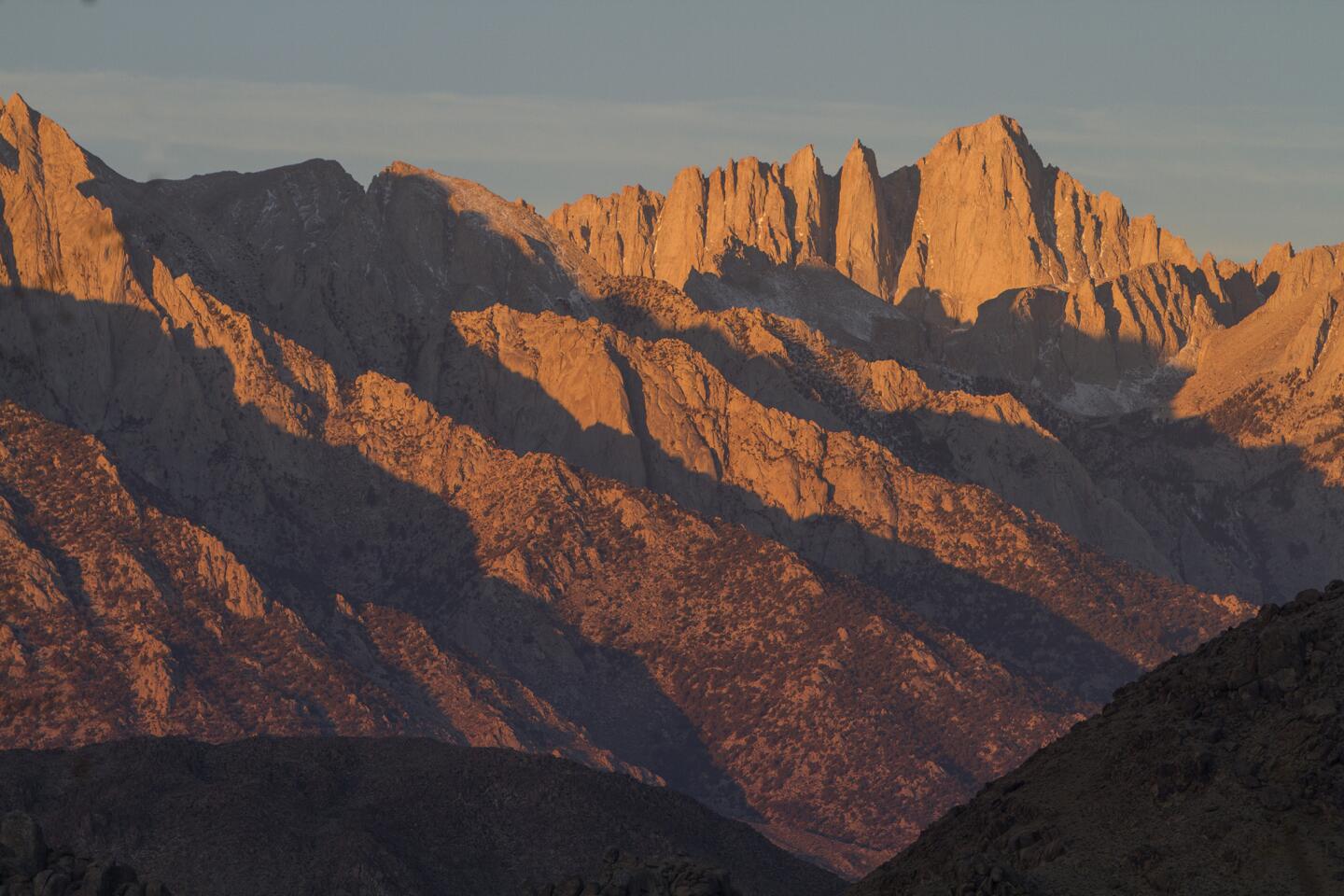
Mt. Whitney seen at sunrise in the Owens Valley. (Don Kelsen / Los Angeles Times)
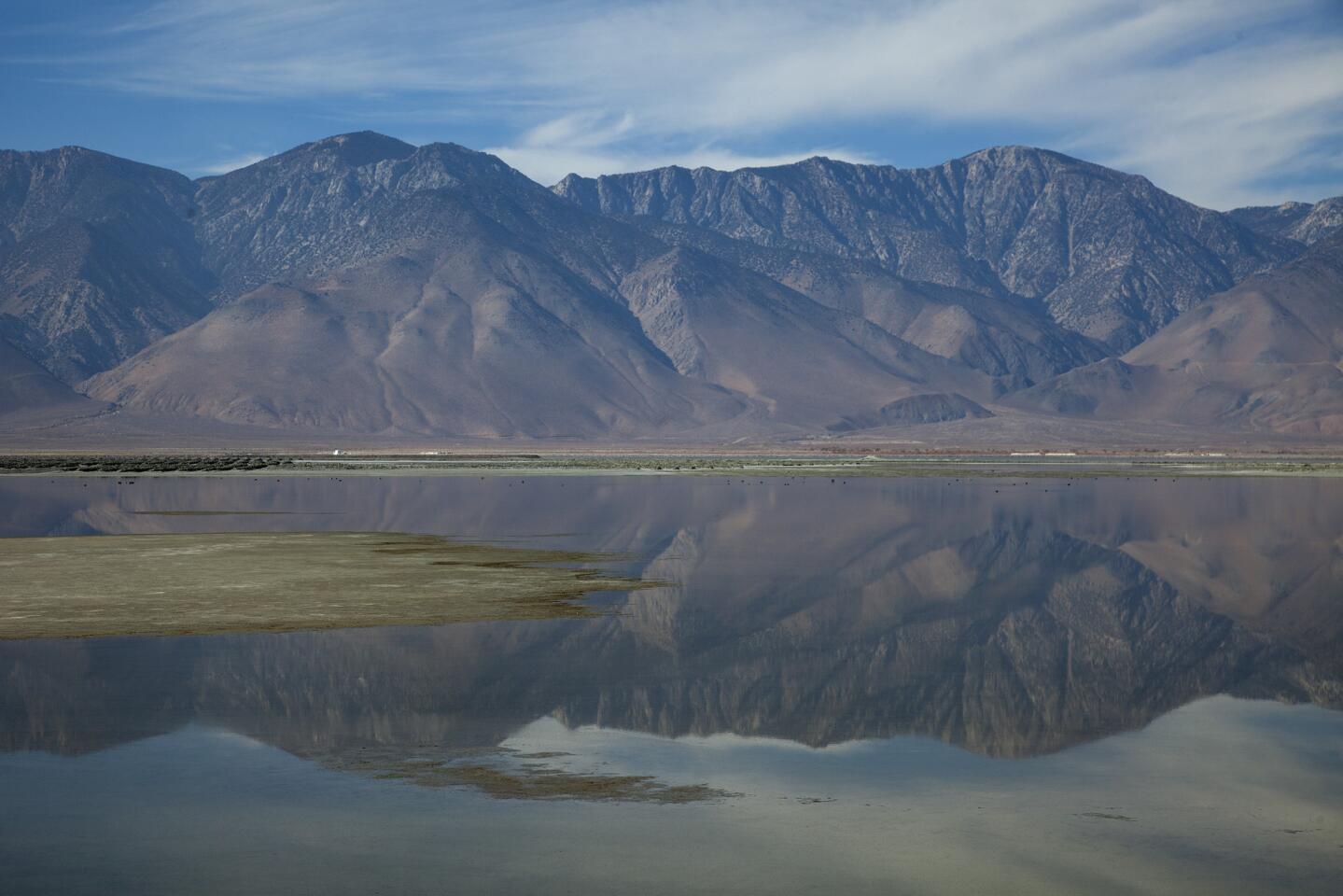
The Sierra Nevada mountains are reflected in the calm water of Owens Lake south of Lone Pine. The lake is dry, but DWP has been flooding it for decades to control choking dust storms in Owens Valley. (Don Kelsen / Los Angeles Times)
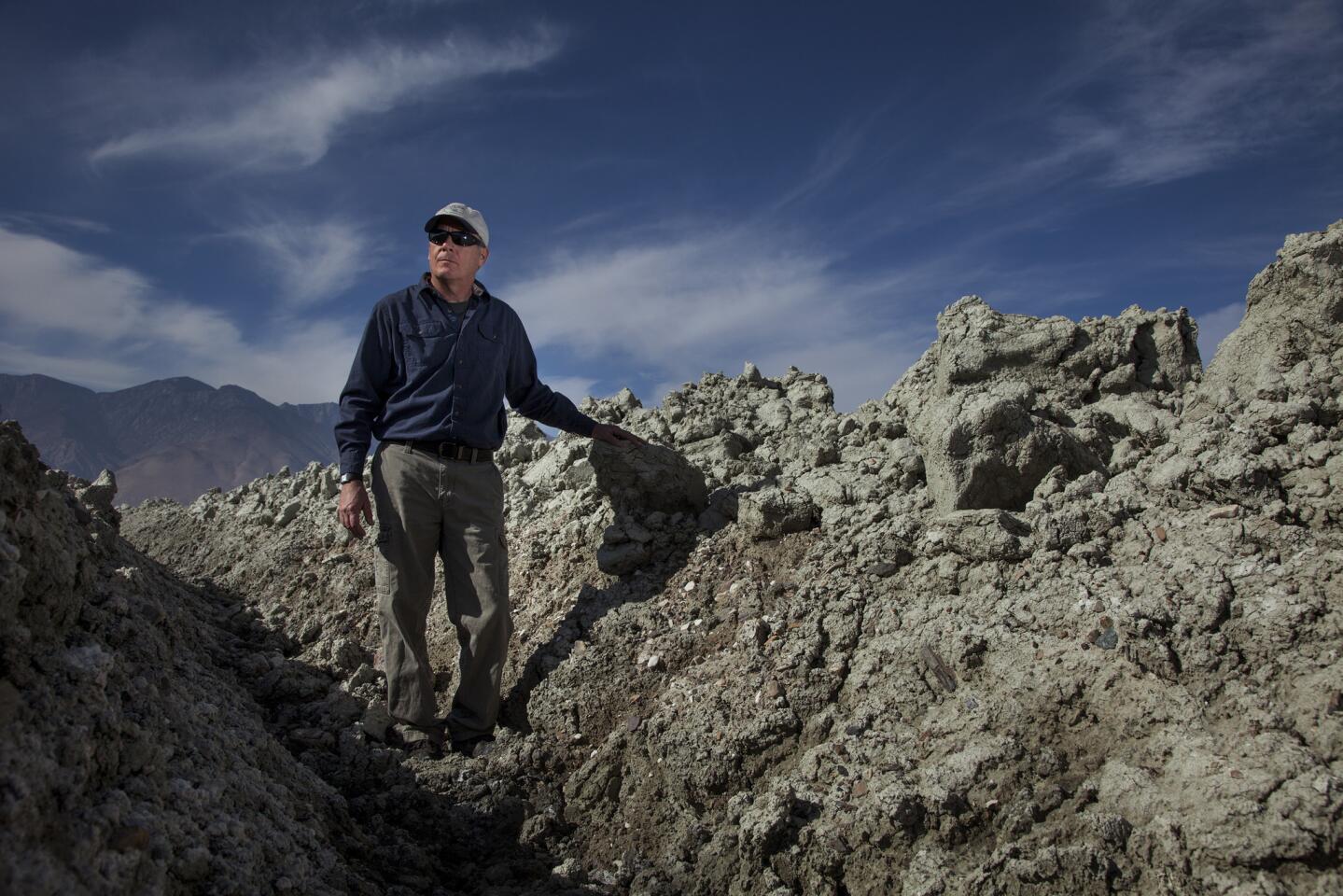
Ted Schade, the enforcement officer for the Great Basin Air Quality Management District, is a longtime DWP nemesis. But Mayor Eric Garcetti, in announcing the deal with Owens Valley, praised Schade as “a truly great environmentalist.” (Don Kelsen / Los Angeles Times)
Advertisement
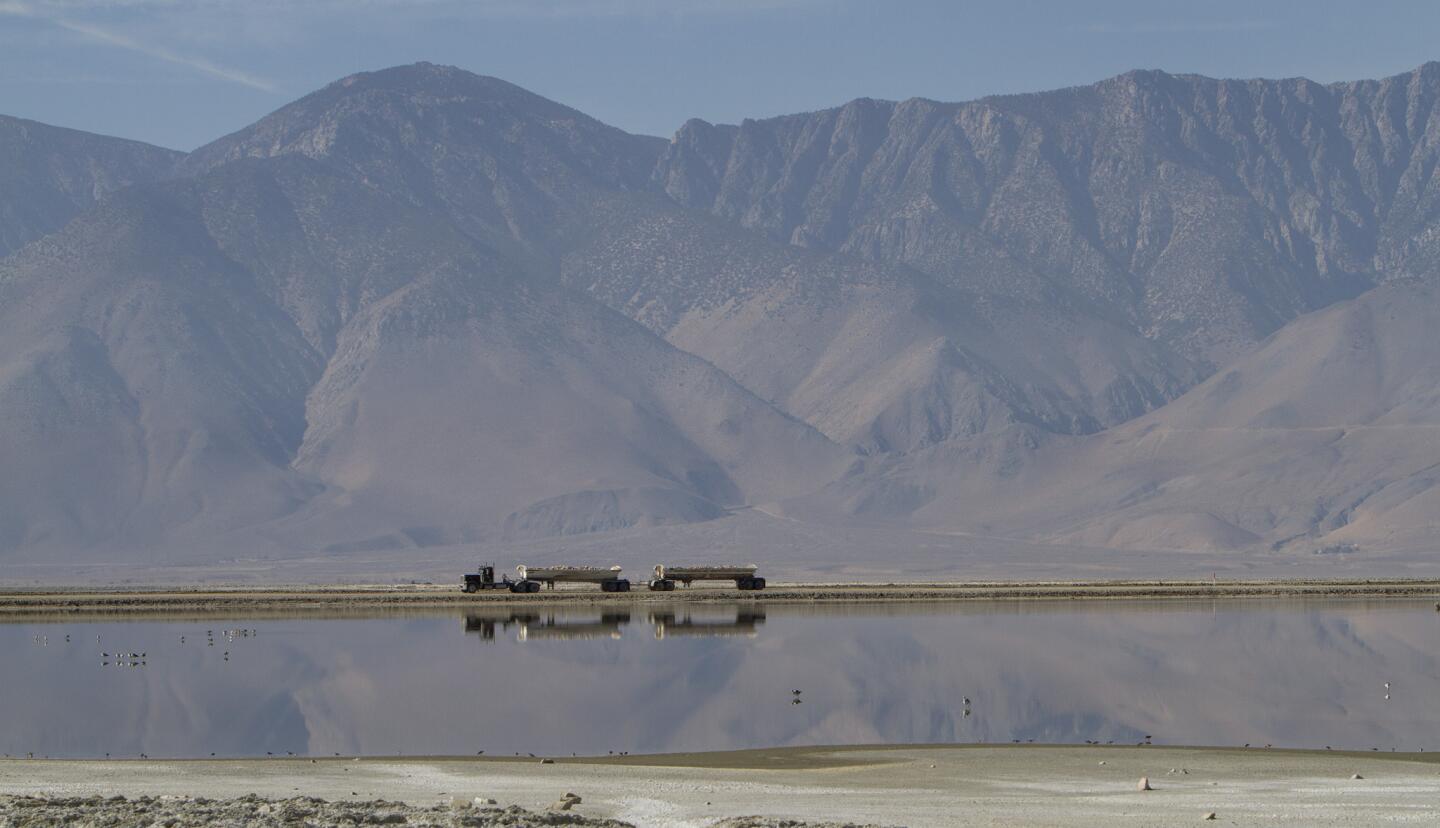
A semi-truck hauls gravel from the Owens Valley quarry across Owens Lake. In addition to water, gravel is also used to control the dust. (Don Kelsen / Los Angeles Times)

After years of flooding the dry lake to control dust, the new, mostly waterless method is expected to save nearly 3 billion gallons of water in the first year. (Don Kelsen / Los Angeles Times)
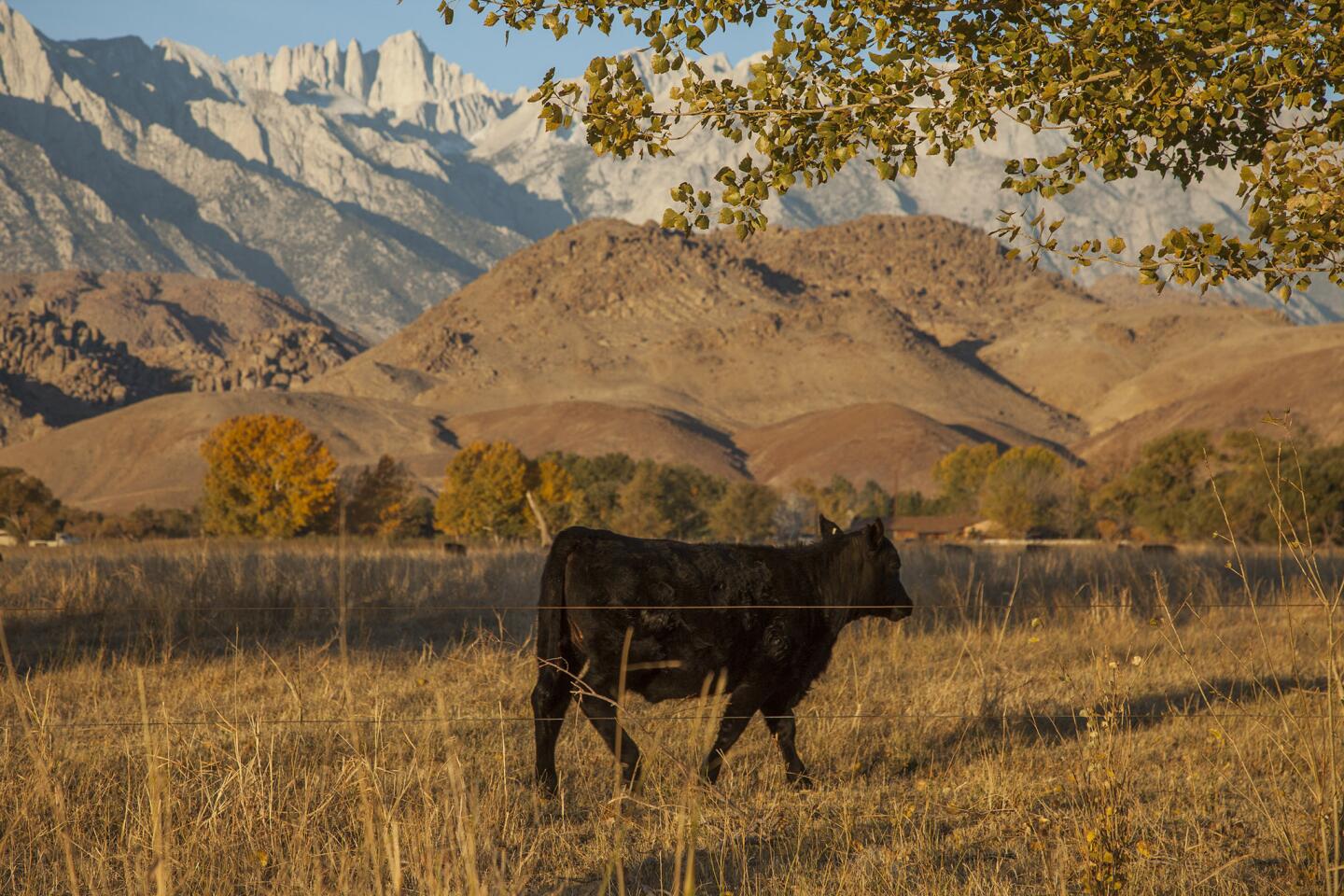
Farmland in the Owens Valley, where Los Angeles and state air quality officers have reached an agreement with the Great Basin Unified Air Pollution Control District designed to end dust storms on the nearby dry Owens Lake. (Don Kelsen / Los Angeles Times)
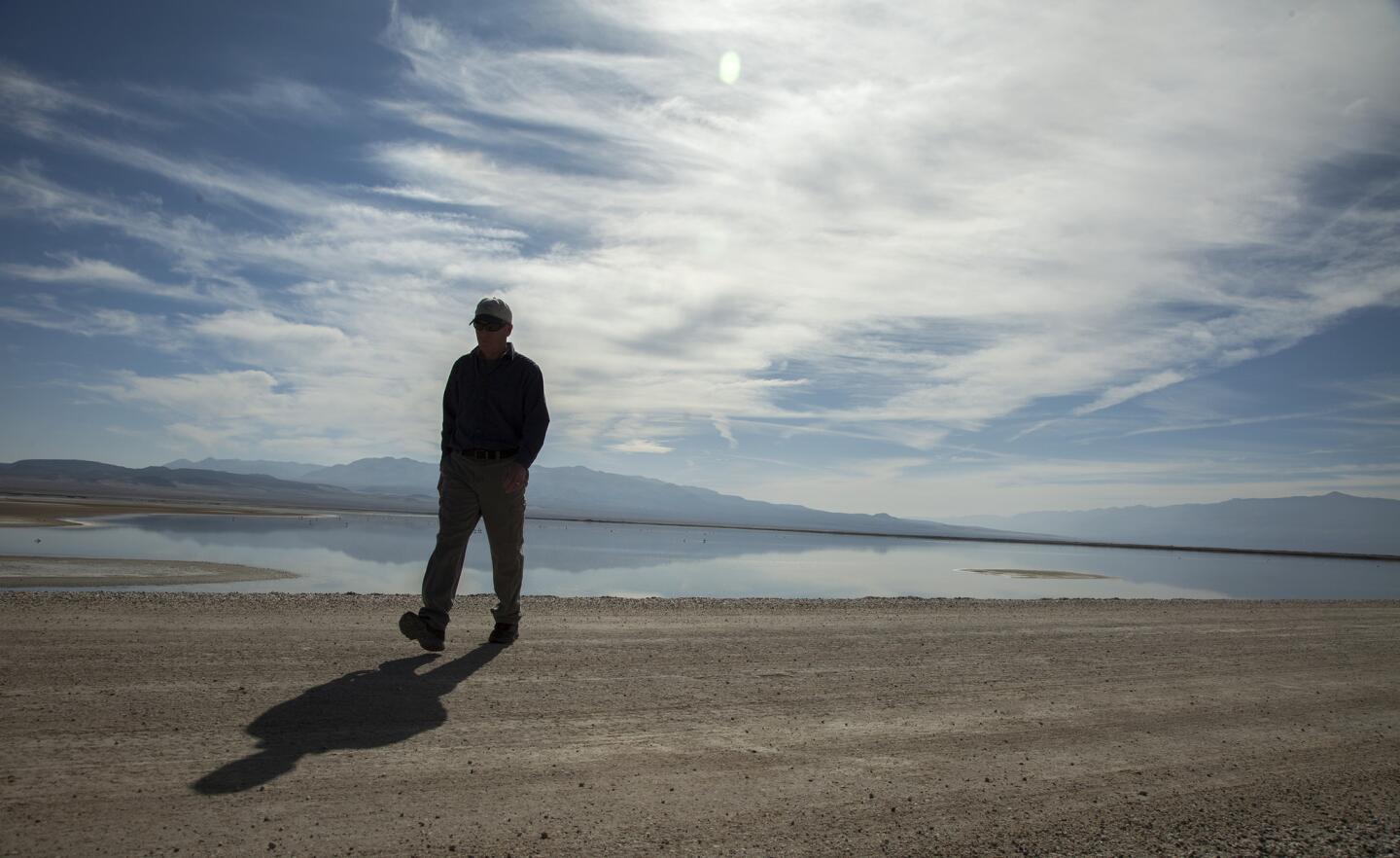
Ted Schade, the enforcement officer for Great Basin Air Quality Management District. Efforts to quell dust coming off the Owens Lake, dried up by the L.A. Aqueduct, have cost the city of Los Angeles tens of millions of dollars. (Don Kelsen / Los Angeles Times)
